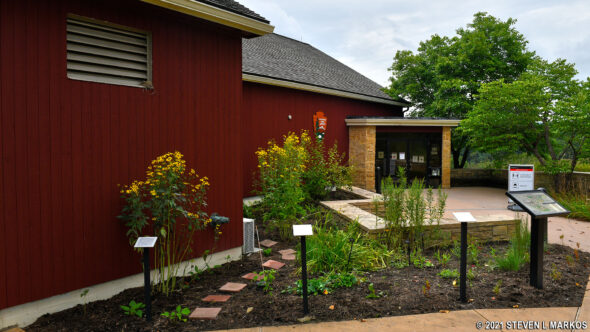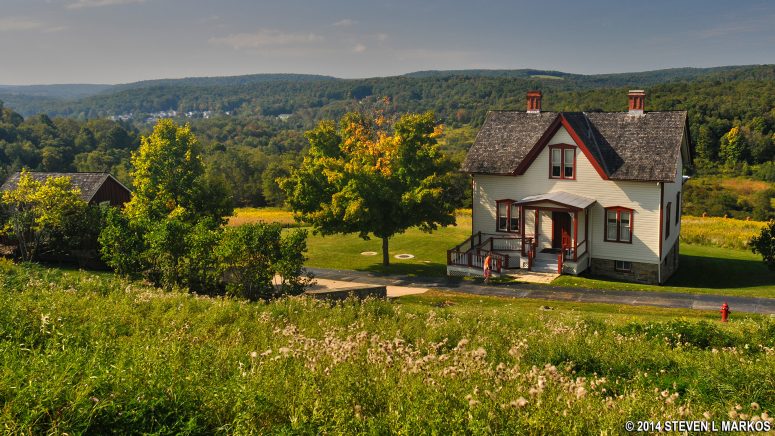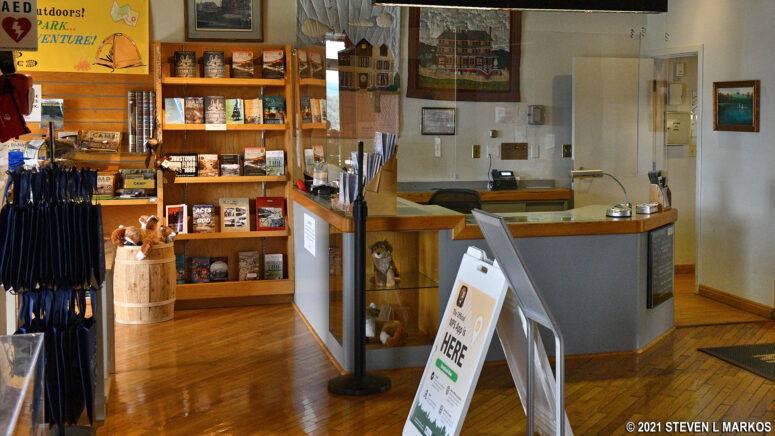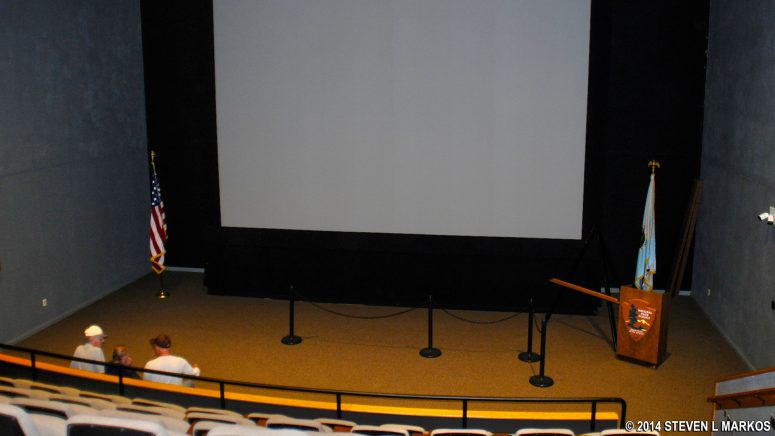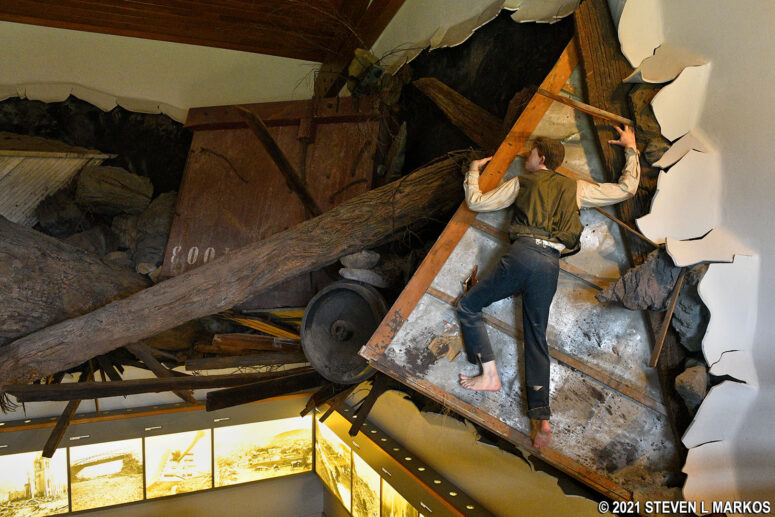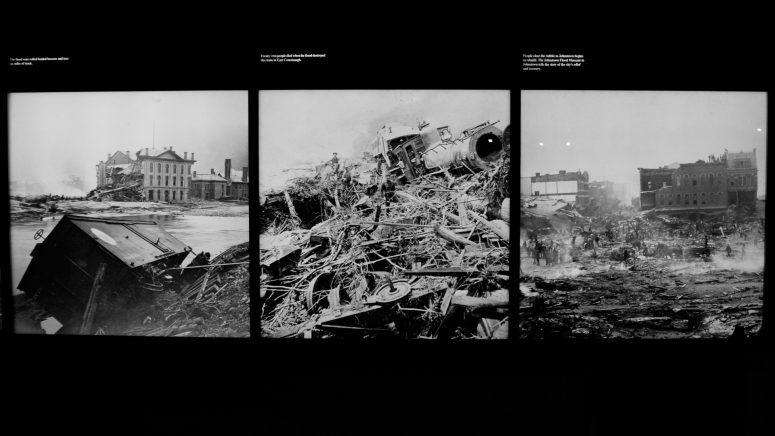GENERAL INFORMATION
The Visitor Center for Johnstown Flood National Memorial is housed in a building resembling a barn owned by Elias Unger, the second president of the South Fork Fishing and Hunting Club and manager of the dam and the club’s other properties. Unger’s original house, just downhill and to the left of the Visitor Center, was purchased by the National Park Service in 1981. It was restored to its 1889 appearance and is now used as a park office. It is not open to the public. The house overlooks the former Lake Conemaugh.
OPERATING HOURS
The Visitor Center is open Fridays through Tuesdays from 9 AM to 5 PM, except when closed on Thanksgiving, Christmas, and New Year’s Day. Keep in mind that times can always change, so before making travel plans, get the latest schedule on the National Park Service’s official Operating Hour and Seasons web page for Johnstown Flood National Memorial.
AMENITIES
- Ranger-staffed information desk where you can get park brochures
- Register for Ranger-guided tours
- Book and souvenir store
- Park film
- Johnstown Flood Museum
- Restroom
PARK FILM
A 35-minute film entitled Black Friday plays every hour on the quarter hour in the park’s large auditorium. I question some of the production decisions of the film, particularly the decision to begin the film with four minutes of blank screen accompanied by the sound of rain and thunder. There is also a good deal of philosophical babble about the flood’s victims, and it takes a while to get to the facts. The flood is depicted through some original special effects, as well as through borrowed footage from many of the Johnstown Flood movies that have been made over the years. I would rate the film PG-13, with disaster violence shown on the same level, though much briefer, as the movie Titanic. At the end, the narrator reads descriptions of the dead from the morgue log, and a few of them are pretty grisly. Despite its shortcomings, I highly advise seeing the film before venturing out to explore the park.
JOHNSTOWN FLOOD MUSEUM
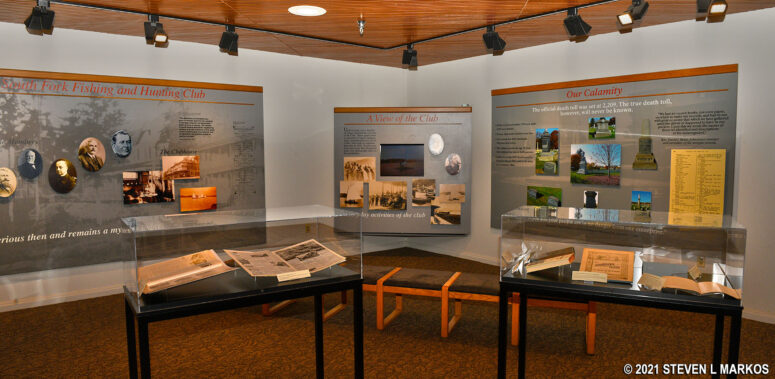
Exhibits at the Johnstown Flood Museum inside the Visitor Center at Johnstown Flood National Memorial
The National Park Service’s Johnstown Flood Museum spans two floors of the Visitor Center building. The top floor, already housing the information desk and gift store, holds the smaller portion of the exhibits. Here you will find information panels covering the South Fork Dam construction and its faults, plus a model of the area that shows the locations of the dam, Unger house, and cottages and clubhouse of the South Fork Fishing and Hunting Club. However, its centerpiece is a large diorama of a young Victor Heiser clinging to a section of his house as he rides the flood waters filled with debris. He was the only surviving member of his family. You can listen to his recollections of the ordeal on any of the audio-presentation devices located along the top floor railing that overlooks the diorama. All audio devices play the same commentary; the multiple devices just allow many people to listen at the same time.
The crux of the museum is on the lower floor. There are a variety of information panels on such topics as the members of the South Fork Fishing and Hunting Club, the debate over who was at fault for the disaster, and the charitable outpouring from around the world that came in response to the disaster. There are also many historical photos, including photos of club activities that were discovered in 1989 by the granddaughter of one of the former members.
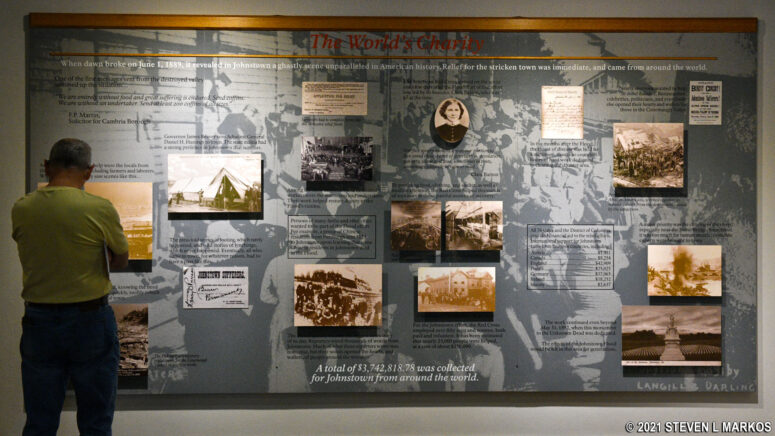
Visitor to Johnstown Flood National Memorial reads about the charitable outpouring in response to the Johnstown Flood, an exhibit in the Visitor Center museum
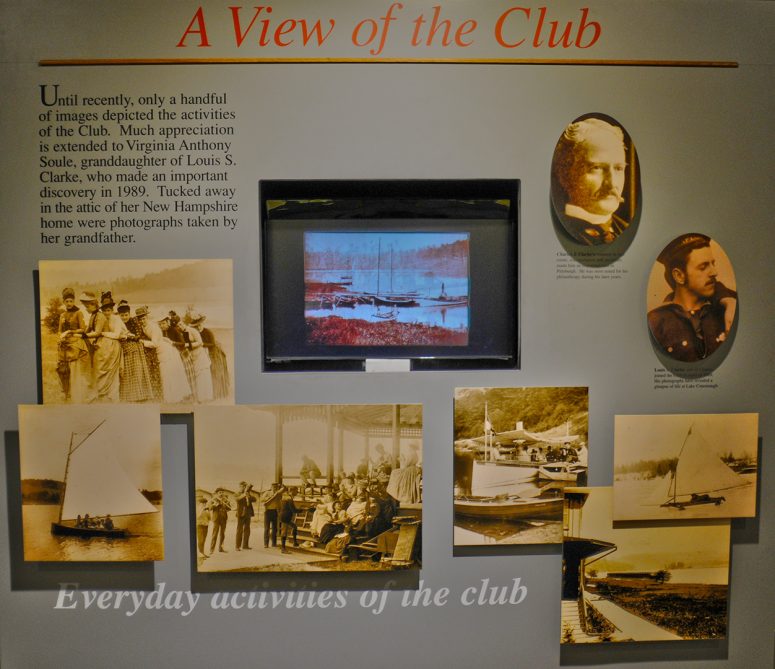
Newly discovered photos of Lake Conemaugh activities on display at the Johnstown Flood Museum inside the Visitor Center at Johnstown Flood National Memorial
The exhibit not to be missed is the animated light map that shows the path of the flood. This narrated presentation shows how the flood waters flowed, the towns that were hit, the obstacles that temporarily slowed the water, and the obstacle that eventually stopped the flow. A video screen attached to the map table not only provides closed captions for hearing impaired visitors, it also displays historical photographs that go along with the presentation.

Animated light map of the flood path is a highlight of the museum inside the Visitor Center at Johnstown Flood National Memorial
One of the newer additions to the Johnstown Flood Museum is the bell from the Mineral Point United Methodist Church. Mineral Point was one of the towns destroyed by the flood waters on May 31, 1889. The church was also destroyed, but the bell was later found downriver in Woodvale. It was reinstalled in the new church in 1890.
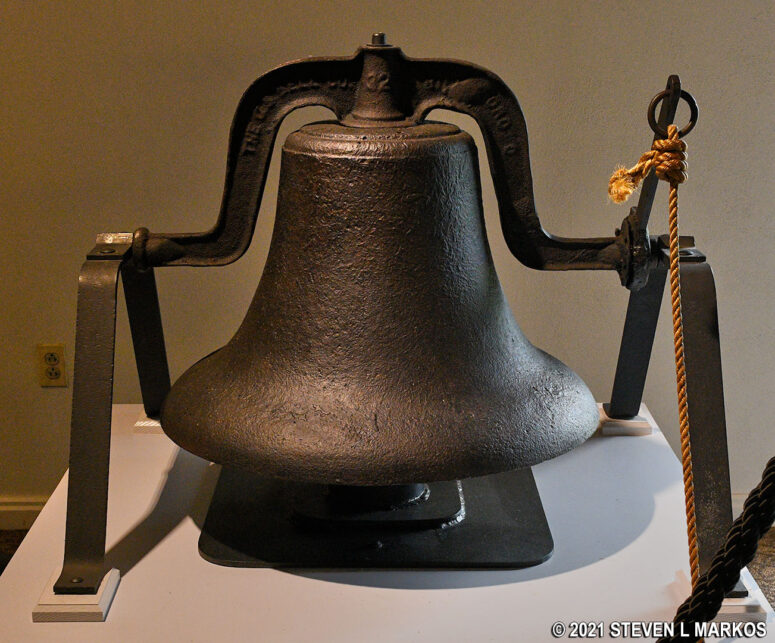
Bell from the Mineral Point United Methodist Church that was destroyed in the Johnstown Flood is now on display inside the Johnstown Flood National Memorial Visitor Center
SCHEDULING YOUR TIME
The Johnstown Flood Museum, while taking up two floors of the Visitor Center, is not jam-packed with exhibits, so the most ardent of Johnstown Flood enthusiasts can read and see all of the information in about an hour. Factor in watching the film, and flood buffs could spend up to two hours at the Visitor Center. However, even if you aren’t interested in reading everything, still allow an hour to talk with a Ranger about what there is to see and do at the park, watch the film, and give the exhibits a quick going over.
With a few exceptions, use of any photograph on the National Park Planner website requires a paid Royalty Free Editorial Use License or Commercial Use License. See the Photo Usage page for details.
Last updated on April 8, 2025

